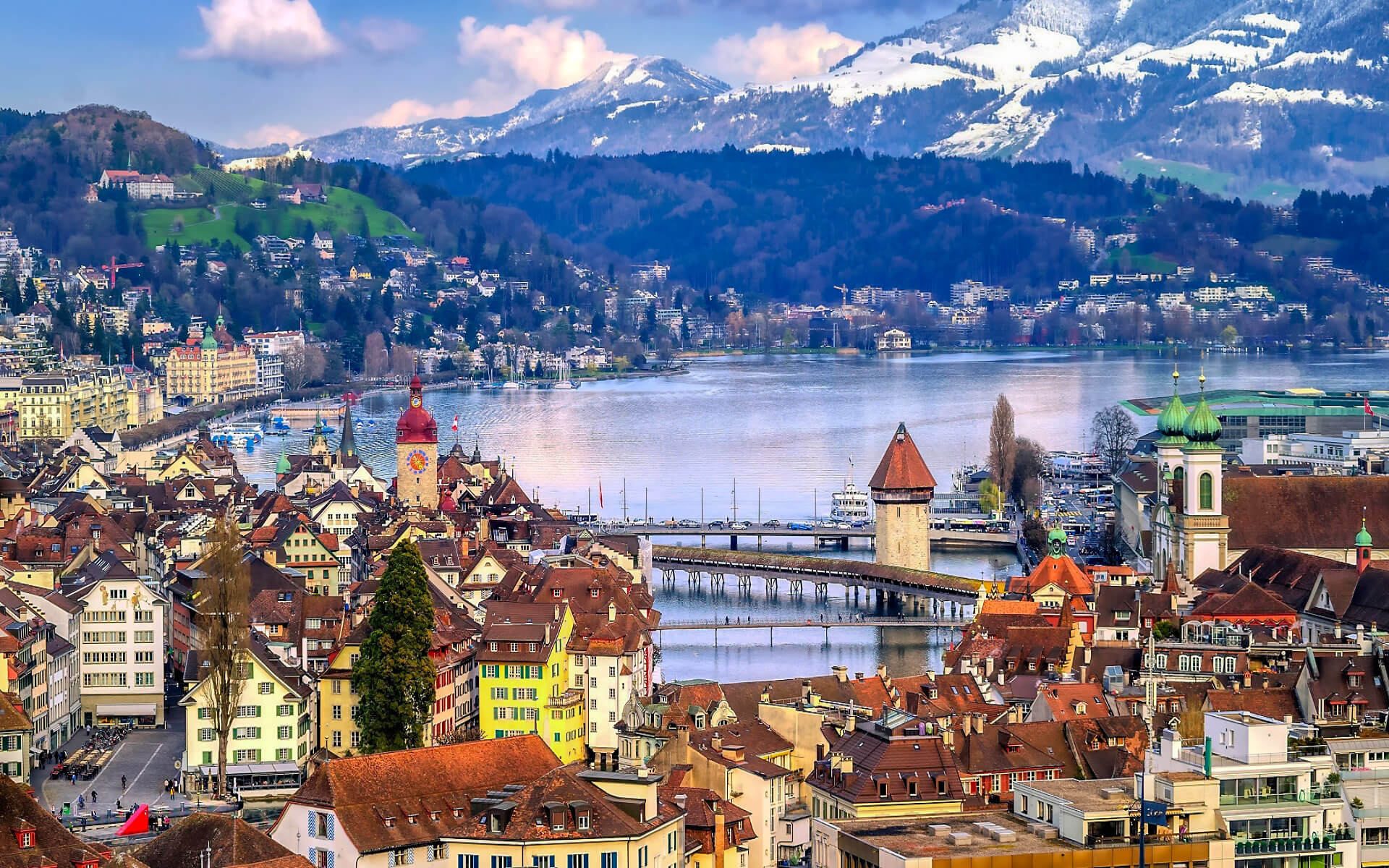Lucerne (Luzern in German, Lozärn in Swiss-German) is a lovely tiny city in Switzerland’s heartland, across the lake from Altdorf, where legend has it that William Tell shot an apple off his son’s head. Lucerne is a fantastic base from which to explore renowned Swiss sights such as Mount Rigi, Pilatus, Titlis, and the Rütli Meadow, in addition to being a lovely spot to visit in its own right.
Lucerne, the first city to join the Swiss Confederation, is now a delightful little city with a strong tourist sector, thanks mostly to its location as a gateway to Central Switzerland. The city became a hub of Swiss folklore and history.
Tourism in Lucerne has a notable history extending back to the mid-nineteenth century, with Mark Twain among many who have visited. In “A Tramp Abroad,” he recounts the fledgling souvenir sector and other early manifestations of the tourist industry.
Between 1961 and 1990, Lucerne had an average of 138.1 days of rain per year and 1,171 millimetres (46.1 in) of precipitation. The wettest month was June, with Lucerne receiving an average of 153 millimetres (6.0 in) of rain. During this month, there was rain on 14.2 days on average. February was the driest month of the year, with an average of 61 mm (2.4 in) of precipitation over 10.2 days. The climate in this region features modest temperature fluctuations between highs and lows, and there is ample rainfall all year. This climate’s Köppen Climate Classification subtype is “Cfb” (Marine West Coast Climate/Oceanic Climate).
Lucerne has a total area of 29.1 square kilometers (11.2 sq mi). As of 2009, 28.0 percent of this land was used for agricultural activities, while 22.3 percent was forested. The balance (47.6 percent) of the land is settled (buildings or roads) and the remainder (2.1 percent) is non-productive (rivers, glaciers or mountains).
Littau had a land area of 13.3 square kilometers prior to the merger (5.1 sq mi). 52.3 percent of this land is used for agriculture, while 21.1 percent is forested. The majority of the land is settled (buildings or roads) and the remaining (1.7 percent) is non-productive (rivers, glaciers or mountains). According to the 1997 land survey, forest covered 21.08 percent of the total land area. 49.17 percent of agricultural land is used for farming or pastures, while 3.16 percent is used for orchards or vine crops. 10.47 percent of the settled area is covered by buildings, 4.29 percent by industry, 1.96 percent by special projects, 2.33 percent by parks or greenbelts, and 5.8 percent by transportation infrastructure. Unproductive flowing water (rivers) accounts for 1.66 percent of unproductive regions, whereas other unproductive land accounts for 0.08 percent.
The municipality employed a total of 77,641 people as of 2012. A total of 166 persons worked in 53 main economic sector firms. The secondary industry employed 7,326 people across 666 different enterprises. Finally, the tertiary industry employed 70,149 people in 6,929 companies. In 2013, 11.0 percent of the population received some kind of social assistance.
In the year 2000, 51.7 percent of the municipality’s population was employed in some way. At the same time, women made up 47.9% of the labor force.
Lucerne has become Switzerland’s most business-friendly canton as a result of its ongoing tax-cutting efforts. As of 2012, Lucerne has the lowest cantonal company tax rate in Switzerland.
Furthermore, Lucerne has exceptionally low personal income tax rates. In a recent research of the BAK Basel Economics taxation index 2012, Lucerne came in fourth position, with a somewhat higher tax rate of just 2% more than the top canton in this comparison.
Since November 2009, Zürich Airport may be accessed from Lucerne in 1 hour and 2 minutes by a direct (every hour) rail link with a station directly below the airport, and in 50 minutes by automobile thanks to a direct road from Lucerne to the Airport, although only during non-rush hours.


